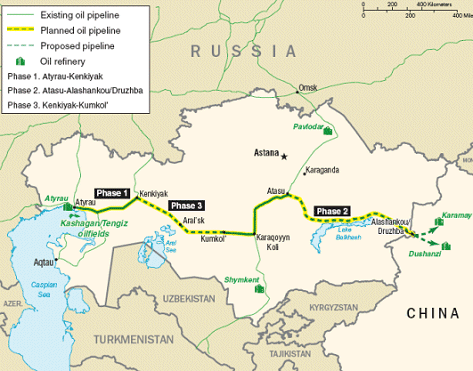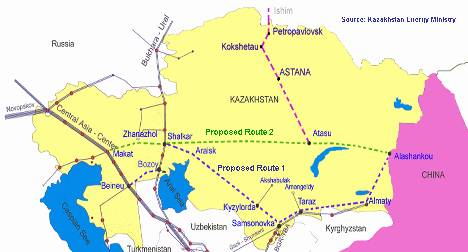Great job with the research, Scarface!
It is obvious that CIA and USA are involved. They are damn scared now of declining relative to China, and will employ all dirty tricks possible to destabilize their rivals.
Indians think they are immune from USA's plots? Wait until India become powerful and rich. Then suddenly Westerners will start harping on human rights in India and encouraging separatist movemetns.
It is obvious that CIA and USA are involved. They are damn scared now of declining relative to China, and will employ all dirty tricks possible to destabilize their rivals.
Indians think they are immune from USA's plots? Wait until India become powerful and rich. Then suddenly Westerners will start harping on human rights in India and encouraging separatist movemetns.
...Cont 2
The suspicious timing of the Xinjiang riots
The current outbreak of riots and unrest in Urumqi, the capital of Xinjiang in the northwest part of China, exploded on July 5 local time.
According to the website of the World Uyghur Congress, the “trigger” for the riots was an alleged violent attack on June 26 in China’s southern Guangdong Province at a toy factory where the WUC alleges that Han Chinese workers attacked and beat to death two Uyghur workers for allegedly raping or sexually molesting two Han Chinese women workers in the factory. On July 1, the Munich arm of the WUC issued a worldwide call for protest demonstrations against Chinese embassies and consulates for the alleged Guangdong attack, despite the fact they admitted the details of the incident were unsubstantiated and filled with allegations and dubious reports.
According to a press release they issued, it was that June 26 alleged attack that gave the WUC the grounds to issue their worldwide call to action.
On July 5, a Sunday in Xinjiang but still the USA Independence Day, July 4, in Washington, the WUC in Washington claimed that Han Chinese armed soldiers seized any Uyghur they found on the streets and according to official Chinese news reports, widespread riots and burning of cars along the streets of Urumqi broke out resulting over the following three days in over 140 deaths.
China’s official Xinhua News Agency said that protesters from the Uighur Muslim ethnic minority group began attacking ethnic Han pedestrians, burning vehicles and attacking buses with batons and rocks. "They took to the street...carrying knives, wooden batons, bricks and stones," they cited an eyewitness as saying. The French AFP news agency quoted Alim Seytoff, general secretary of the Uighur American Association in Washington, that according to his information, police had begun shooting "indiscriminately" at protesting crowds.
Two different versions of the same events: The Chinese government and pictures of the riots indicate it was Uyghur riot and attacks on Han Chinese residents that resulted in deaths and destruction. French official reports put the blame on Chinese police “shooting indiscriminately.” Significantly, the French AFP report relies on the NED-funded Uyghur American Association of Rebiya Kadeer for its information. The reader should judge if the AFP account might be motivated by a US geopolitical agenda, a deeper game from the Obama Administration towards China’s economic future.
Is it merely coincidence that the riots in Xinjiang by Uyghur organizations broke out only days after the meeting took place in Yakaterinburg, Russia of the member nations of the Shanghai Cooperation Organization, as well as Iran as official observer guest, represented by President Ahmadinejad?
Over the past few years, in the face of what is seen as an increasingly hostile and incalculable United States foreign policy, the major nations of Eurasia—China, Russia, Kazakhstan, Uzbekistan, Kyrgyzstan, Tajikistan have increasingly sought ways of direct and more effective cooperation in economic as well as security areas. In addition, formal Observer status within SCO has been given to Iran, Pakistan, India and Mongolia. The SCO defense ministers are in regular and growing consultation on mutual defense needs, as NATO and the US military command continue provocatively to expand across the region wherever it can.
The Strategic Importance of Xinjiang for Eurasian Energy Infrastructure
There is another reason for the nations of the SCO, a vital national security element, to having peace and stability in China’s Xinjiang region. Some of China’s most important oil and gas pipeline routes pass directly through Xinjiang province. Energy relations between Kazkhstan and China are of enormous strategic importance for both countries, and allow China to become less dependent on oil supply sources that can be cut off by possible US interdiction should relations deteriorate to such a point.
Kazak President Nursultan Nazarbayev paid a State visit in April 2009 to Beijing. The talks concerned deepening economic cooperation, above all in the energy area, where Kazkhastan holds huge reserves of oil and likely as well of natural gas. After the talks in Beijing, Chinese media carried articles with such titles as “"Kazakhstani oil to fill in the Great Chinese pipe."
The Atasu-Alashankou pipeline to be completed in 2009 will provide transportation of transit gas to China via Xinjiang. As well Chinese energy companies are involved in construction of a Zhanazholskiy gas processing plant, Pavlodar electrolyze plant and Moynakskaya hydro electric station in Kazakhstan.

According to the US Government’s Energy Information Administration, Kazakhstan’s Kashagan field is the largest oil field outside the Middle East and the fifth largest in the world in terms of reserves, located off the northern shore of the Caspian Sea, near the city of Atyrau. China has built a 613-mile-long pipeline from Atasu, in northwestern Kazakhstan, to Alashankou at the border of China's Xinjiang region which is exporting Caspian oil to China. PetroChina’s ChinaOil is the exclusive buyer of the crude oil on the Chinese side. The pipeline is a joint venture of CNPC and Kaztransoil of Kazkhstan. Some 85,000 bbl/d of Kazakh crude oil flowed through the pipeline during 2007. China’s CNPC is also involved in other major energy projects with Kazkhstan. They all traverse China’s Xinjiang region.
In 2007 CNPC signed an agreement to invest more than $2 billion to construct a natural gas pipeline from Turkmenistan through Uzbekistan and Kazakhstan to China. That pipeline would start at Gedaim on the border of Turkmenistan and Uzbekistan and extend 1,100 miles through Uzbekistan and Kazakhstan to Khorgos in China's Xinjiang region. Turkmenistan and China have signed a 30-year supply agreement for the gas that would fill the pipeline. CNPC has set up two entities to oversee the Turkmen upstream project and the development of a second pipeline that will cross China from the Xinjiang region to southeast China at a cost of some $7 billion.

As well, Russia and China are discussing major natural gas pipelines from eastern Siberia through Xinjiang into China. Eastern Siberia contains around 135 Trillion cubic feet of proven plus probable natural gas reserves. The Kovykta natural gas field could give China with natural gas in the next decade via a proposed pipeline.
During the current global economic crisis, Kazakhstan received a major credit from China of $10 billion, half of which is for oil and gas sector. The oil pipeline Atasu-Alashankou and the gas pipeline China-Central Asia, are an instrument of strategic 'linkage' of central Asian countries to the economy China. That Eurasian cohesion from Russia to China across Central Asian countries is the geopolitical cohesion Washington most fears. While they would never say so, growing instability in Xinjiang would be an ideal way for Washington to weaken that growing cohesion of the Shanghai Cooperation Organization nations.
